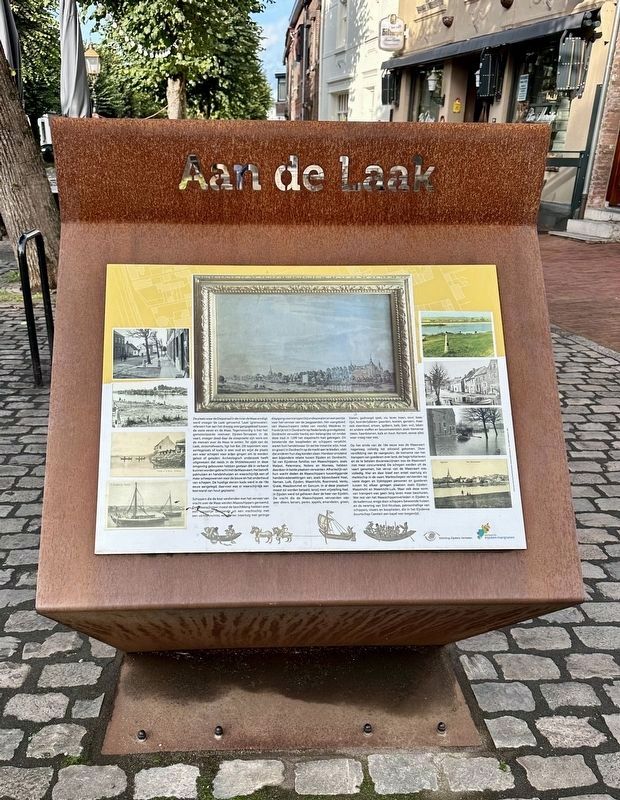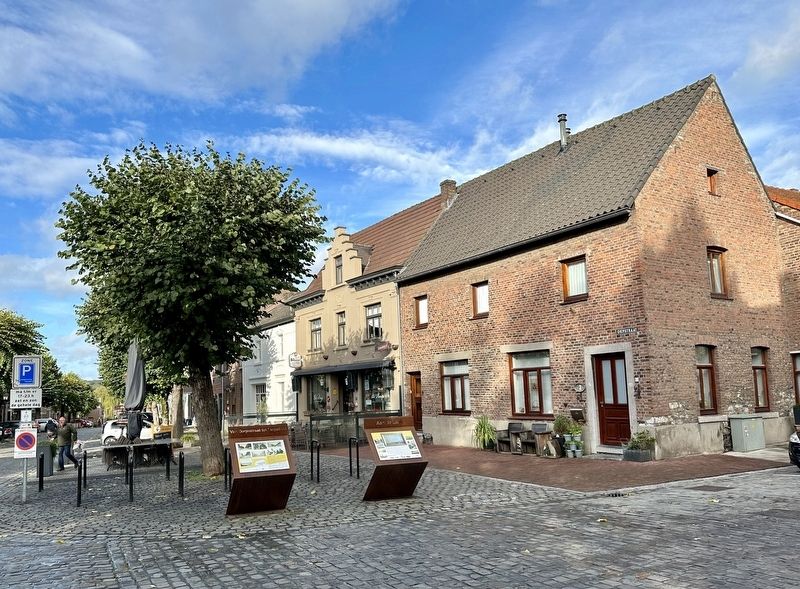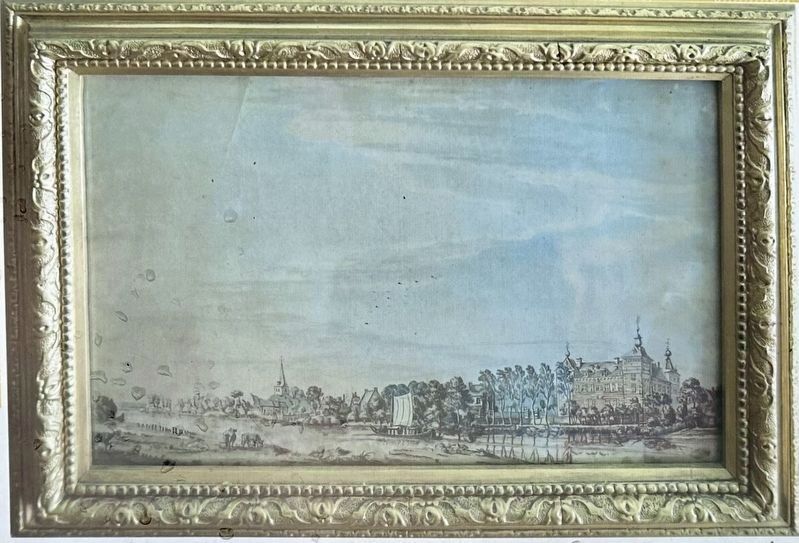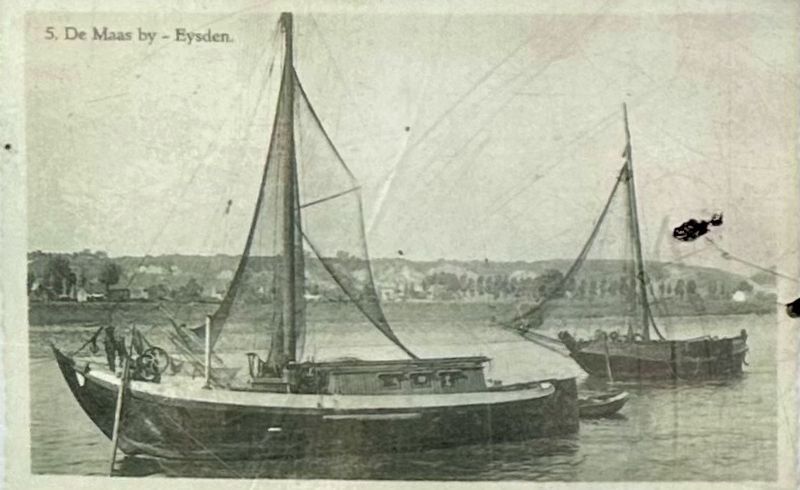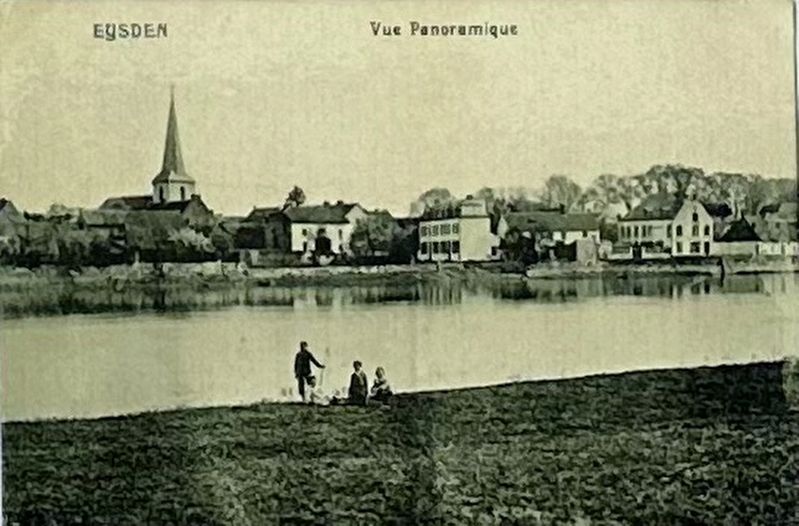Eijsden in Eijsden-Margraten, Limburg, Netherlands — Northwestern Europe
Aan de Laak / At the Border Water
Schippers die de kost verdienden met het vervoer van vracht over de Maas werden Maasschippers genoemd. Een Maasschipper moest de beschikking hebben over een ‘coppelije’ bestaande uit een vrachtschip met een verblijfsruimte, een lichter (vaartuig met geringe diepgang voor transport bij ondiep water) en een pontje voor het vervoer van de jaagpaarden. Het vaargebied van Maasschippers reikte van voorbij Mézières in Frankrijk tot in Dordrecht op Nederlands grondgebied. Dordrecht vervulde hierbij een belangrijke rol omdat deze stad in 1299 het stapelrecht had gekregen. Dit betekende dat kooplieden en schippers verplicht waren hun handelswaar (in eerste instantie wijn, hout en graan) in Dordrecht op de markt aan te bieden, vóór dat anderen hun slag konden slaan. Hierdoor ontstond een bijzondere relatie tussen Eijsden en Dordrecht. Tal van Eijsdense families van Maasschippers, zoals Walpot, Petermans, Nolens en Morrees, hebben daardoor in beide plaatsen verwanten. Afhankelijk van hun vracht deden de Maasschippers tussenliggende handelsnederzettingen aan, zoals bijvoorbeeld Hoei, Namen, Luik, Eijsden, Maastricht, Roermond, Venlo, Grave, Maasbommel en Gorcum. In al deze plaatsen moest tol worden betaald, tenzij men vrijstelling had. In Eijsden werd tol geheven door de heer van Eijsden. De vracht die de Maasschippers vervoerden was zeer divers: kersen, peren, appels, amandelen, graan, bieten, gedroogd spek, vis, lever, traan, zout, kaas, rijst, boerderijdieren (paarden, koeien, ganzen), maar ook steenkool, ertsen, spijkers, kalk,
ijzer, wol, laken
en andere stoffen en bouwmaterialen zoals Namense
steen, haardstenen, kalk en hout. Kortom, zowat alles
waar vraag naar was.
Op het einde van de 18e eeuw was de Maasvaart nagenoeg volledig tot stilstand gekomen. Door verslibbing van de vaargeulen, de toename van het transport van goederen over land, de hoge toltarieven en de te betalen douaneaccijnzen was de Maasvaart niet meer concurrerend. De schepen werden uit de vaart genomen, het verval van de Maasvaart was volledig. Hier en daar bleef een enkel vaartuig als marktschip in de vaart. Marktschepen vervoerden op vaste dagen en tijdstippen personen en goederen tussen bij elkaar gelegen plaatsen zoals Eijsden- Maastricht en Maastricht-Luik. Maar ook deze vorm van transport was geen lang leven meer beschoren. Wat rest van het Maasschippersverleden in Eijsden is de kademuur, enige door schippers bewoonde huizen en de verering van Sint-Nicolaas, patroonheilige van schippers, vissers en kooplieden, die in het Eijsdense buurtschap Caestert een kapel was toegewijd.
The place where the Diepstraat ends in the Maas (or Meuse) river used to be called 'de Laak'. 'Laak' (border water) here refers to the swampy transition area between the permanent bank and the river. Nowadays the motorized foot ferry Eijsden-Ternraai is in service here, where formerly the sloop rower used to do his work to ferry people across the Maas. On the side of the Laak, downstream, lies the Bat. This toponym for a mooring or quay is very old and indicates the place where ships anchored to were be unloaded or loaded. Archaeological research has shown that there were buildings in this area in the Middle Ages that can be associated with the Maasvaart. These building would have included warehouses and trading houses and probably one or more shipyards for the construction and maintenance of ships. The current stone quay was constructed in the 19th century, before which a wooden retaining wall was probably placed.
Skippers who earned a living by transporting freight on the Meuse were called Maasschippers (“Maas skippers”). A Maas skipper had to have access to a 'coppelije' consisting of a cargo ship with a living space, a lighter (a vessel with a shallow draft for transport in shallow water) and a ferry for the transport of horses (for hunting). The sailing area of Maas skippers extended from beyond Mézières in France to Dordrecht on Dutch territory. Dordrecht played an important role in this because this city had been granted “staple” rights in 1299. This meant that merchants and skippers were obliged to offer their merchandise (primarily wine, wood and grain) on the market in Dordrecht before others could make their move. This created a special relationship between Eijsden and Dordrecht. Many Eijsden families of Maas skippers, such as Walpot, Petermans, Nolens and Morrees, therefore had relatives in both places. Depending on their cargo, the Maas skippers visited intermediate trading settlements, such as Huy, Namur, Liège, Eijsden, Maastricht, Roermond, Venlo, Grave, Maasbommel and Gorcum. Tolls had to be paid in all these places, unless one had an exemption. Tolls were levied in Eijsden by the lord of Eijsden. The cargo that the Maas skippers transported was very diverse: cherries, pears, apples, almonds, grain, beets, dried bacon, fish, liver, salt, cheese, rice, farm animals (horses, cows, geese), but also coal, ores, nails, lime, iron, wool, cloth and other fabrics and building materials such as Namur stone, hearth stones, lime and wood. In short, just about everything that was in demand.
At the end of the 18th century, the Maasvaart (“Maas shipping route”) almost completely came to a standstill. Due to silting of the shipping channels, the increase in the transport of goods overland, the high toll rates and the customs duties to be paid, the Maasvaart was no longer competitive. The ships were taken out of service and the Maasvaart was completely destroyed. Here and there a single vessel remained in service as a market ship. Market ships transported people and goods on fixed days and times between places such as Eijsden-Maastricht and Maastricht-Liège. But this form of transport was also short-lived. What remains of the Maas skippers' past in Eijsden is the quay wall, some houses that were inhabited by skippers, and the veneration of Saint Nicholas, the patron saint of skippers, fishermen and merchants, who has a chapel dedicated to him in the Eijsden hamlet of Caestert.
Erected 2020 by Stichting Eijsdens Verleden, Gemeente Eijsden-Margraten.
Topics. This historical marker is listed in these topic lists: Industry & Commerce • Waterways & Vessels. A significant historical year for this entry is 1299.
Location. 50° 46.526′ N, 5° 42.221′ E. Marker is in Eijsden, Limburg, in Eijsden-Margraten. Marker is at the intersection of Diepstraat and Schoolsstraat, on the right when traveling west on Diepstraat. Touch for map. Marker is at or near this postal address: Diepstraat 2, Eijsden, Limburg 6245 CA, Netherlands. Touch for directions.
Other nearby markers. At least 8 other markers are within walking distance of this marker. Von Dorpsstraat tot Diepstraat / From Dorpsstraat to Diepstraat (here, next to this marker); Petrus Wolfs (about 210 meters away, measured in a direct line); Eijsden - Gronsveld Holocaust Memorial - De Breuk (“The Break”) (about 240 meters away); Verzetsmonument Eijsden / Resistance Memorial Eijsden (about 240 meters away); Sint Christinakerk / Saint Christina Church (approx. 0.3 kilometers away); Het Veldje / The Field (approx. 0.3 kilometers away); Vlucht naar de vrijheid / Flight to Freedom (approx. 0.3 kilometers away); Opvang Belgische vluchtelingen / Asylum for Belgian Refugees (approx. 0.6 kilometers away). Touch for a list and map of all markers in Eijsden.
Credits. This page was last revised on February 3, 2024. It was originally submitted on February 3, 2024, by Andrew Ruppenstein of Lamorinda, California. This page has been viewed 51 times since then. Photos: 1, 2, 3, 4, 5. submitted on February 3, 2024, by Andrew Ruppenstein of Lamorinda, California.
